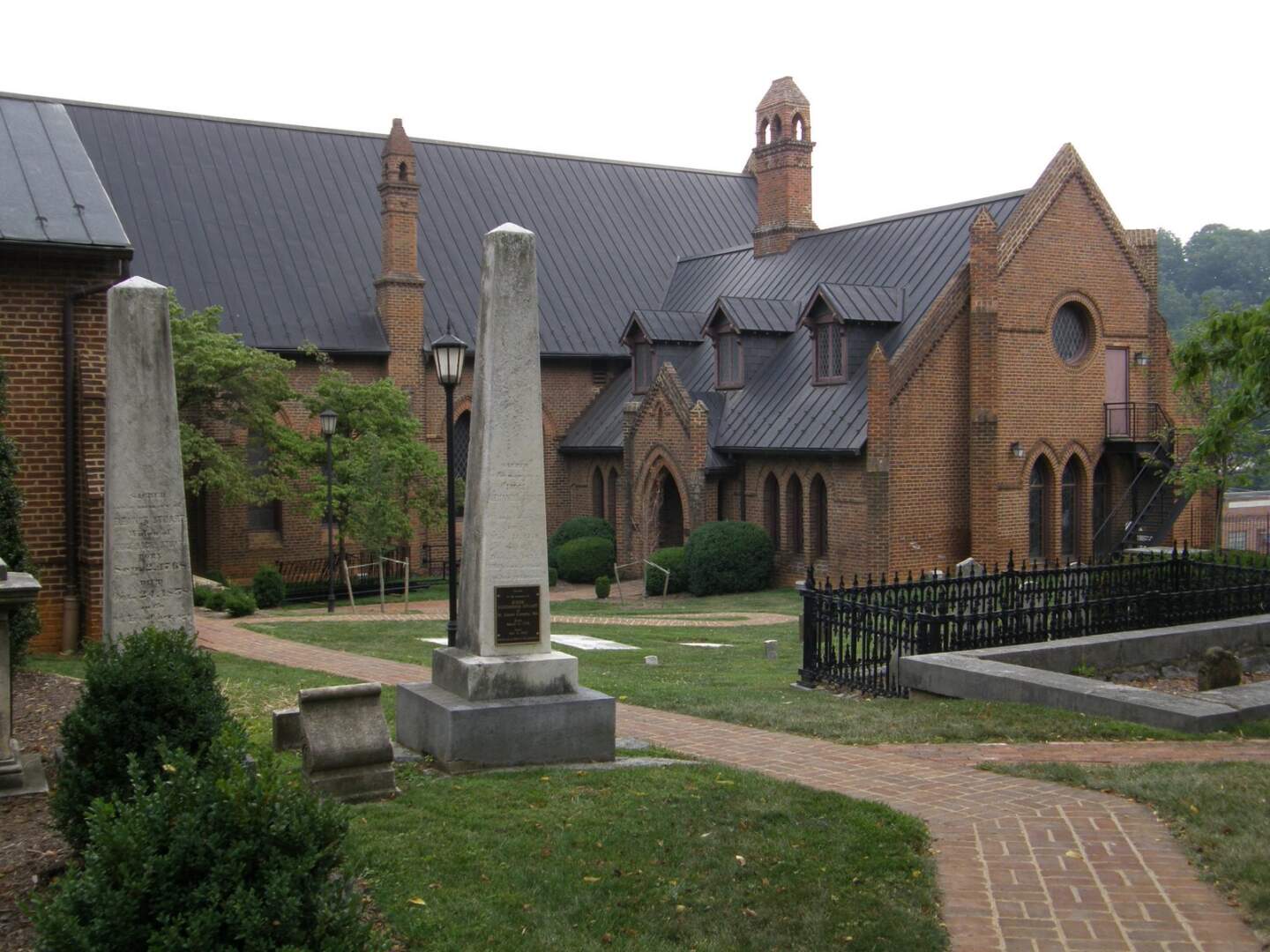By all indications my car problem was fixed and I was finally on my way to a family wedding. With all day to explore before time to meet Leslie and Mike in Charlottesville for dinner, I had a couple of stops on my list.
First stop was Natural Bridge. I have been aware of Natural Bridge most of my life but until today, it was just a picture postcard and an exit on the interstate. This is the place where my parents honeymooned some 62 years ago this month and, if I remember the story, they traveled here from Staunton by bus because neither owned a car.
Natural Bridge is an impressive sight. Experts believe it dates back to the Mesozoic Era (some 100 million years ago) when the James River was defined and the erosion of the entire Appalachian Valley began. Called “The Bridge of God” by the Monocan Indians, the bridge has quite a history in recent times too. Once property of the English crown, it was deeded to Thomas Jefferson on July 5, 1774 and surveyed by George Washington, who carved his initials under the bridge and left his surveyors cross.
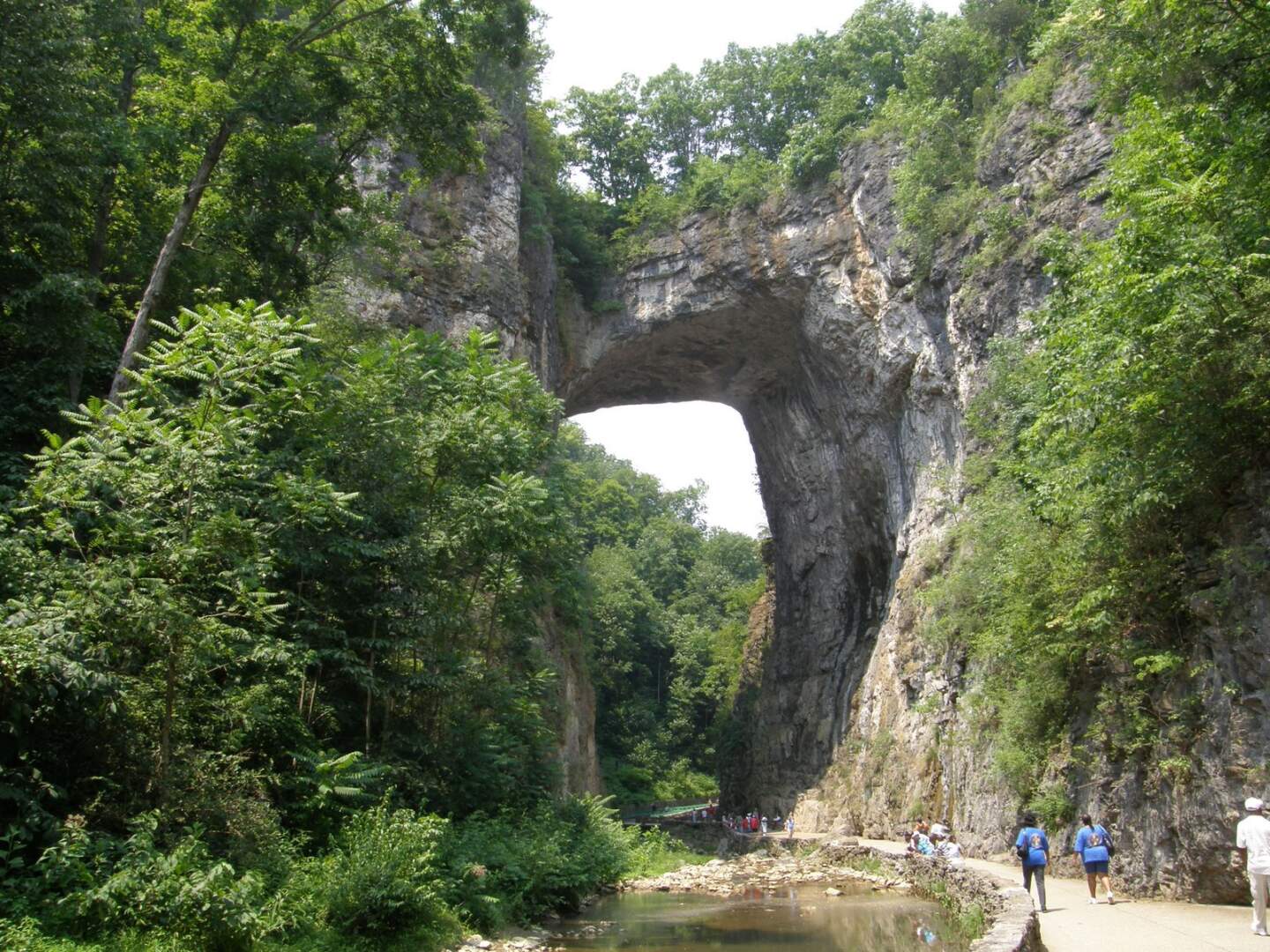 Natural Bridge-215.5′ height, 49′ wide at it’s widest point
Natural Bridge-215.5′ height, 49′ wide at it’s widest point
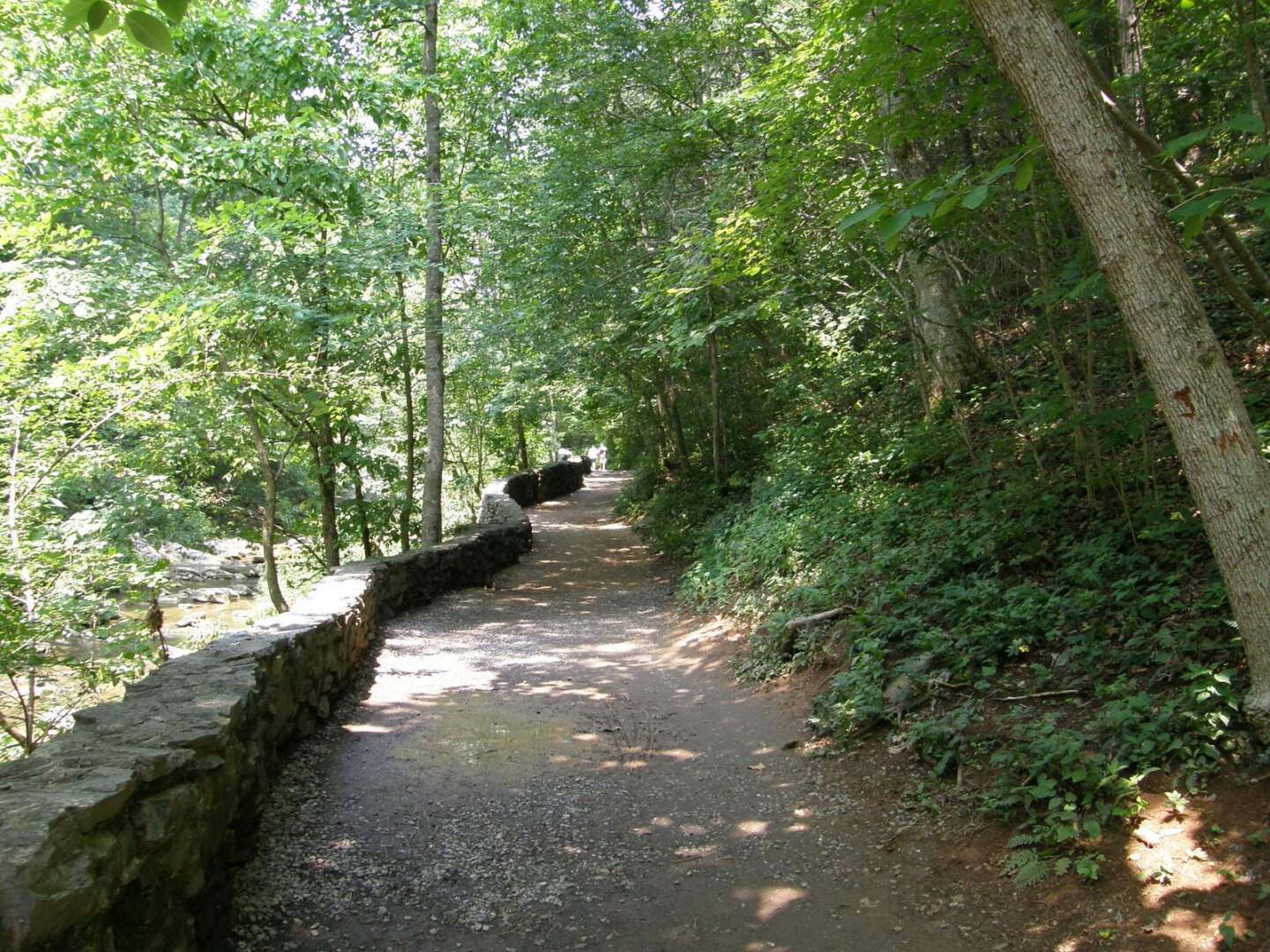 A meandering, flat path travels beside Cedar Creek (left of the trail) to Lace Waterfalls
A meandering, flat path travels beside Cedar Creek (left of the trail) to Lace Waterfalls
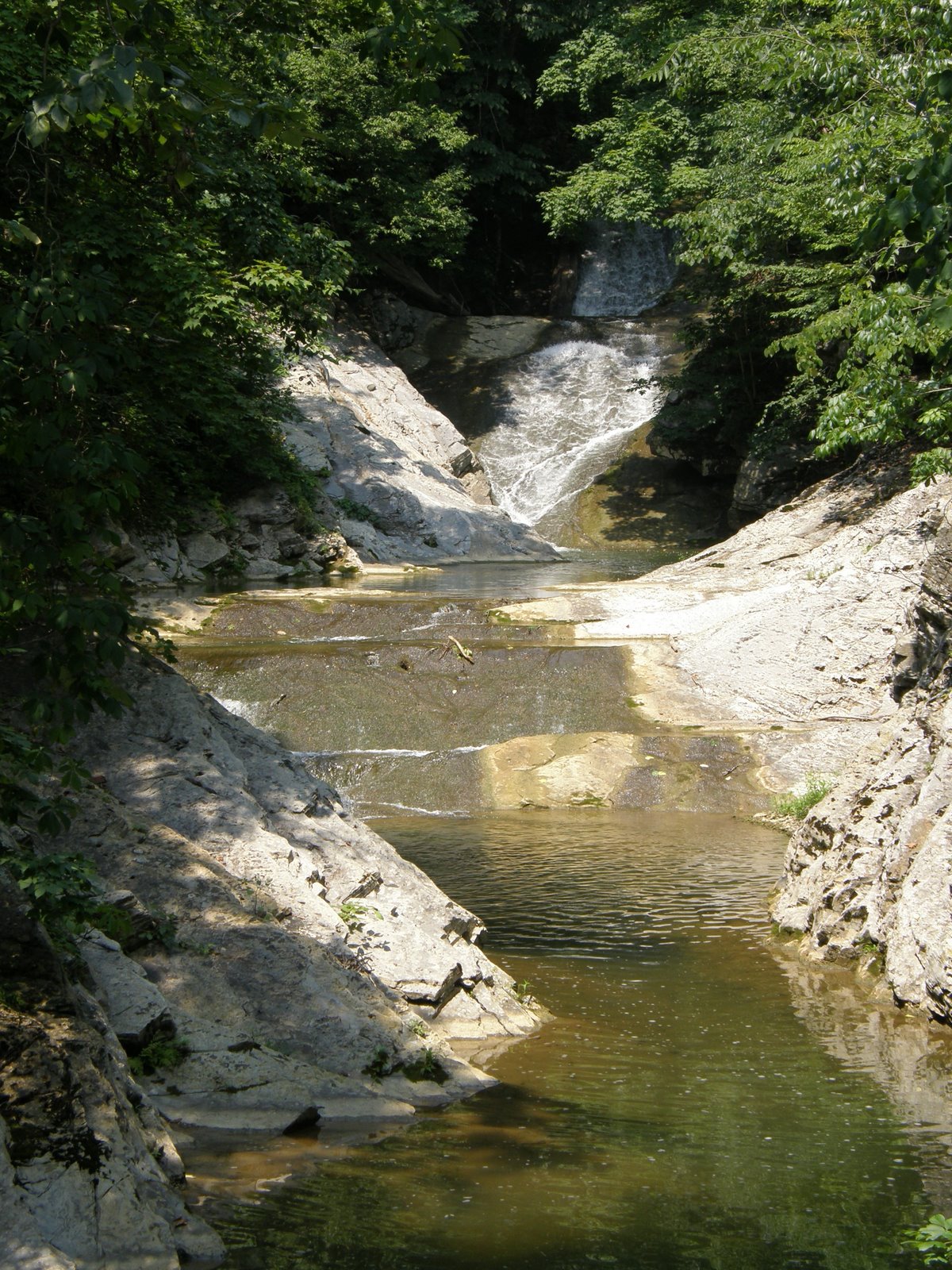 Lace Waterfalls where Cedar Creek sprays down the rocks from a distance of 50′, covering the travertine boulders with its snowy spray…or so the sign says anyway. On this day the waterfall was slight based on the recent drought.
Lace Waterfalls where Cedar Creek sprays down the rocks from a distance of 50′, covering the travertine boulders with its snowy spray…or so the sign says anyway. On this day the waterfall was slight based on the recent drought.
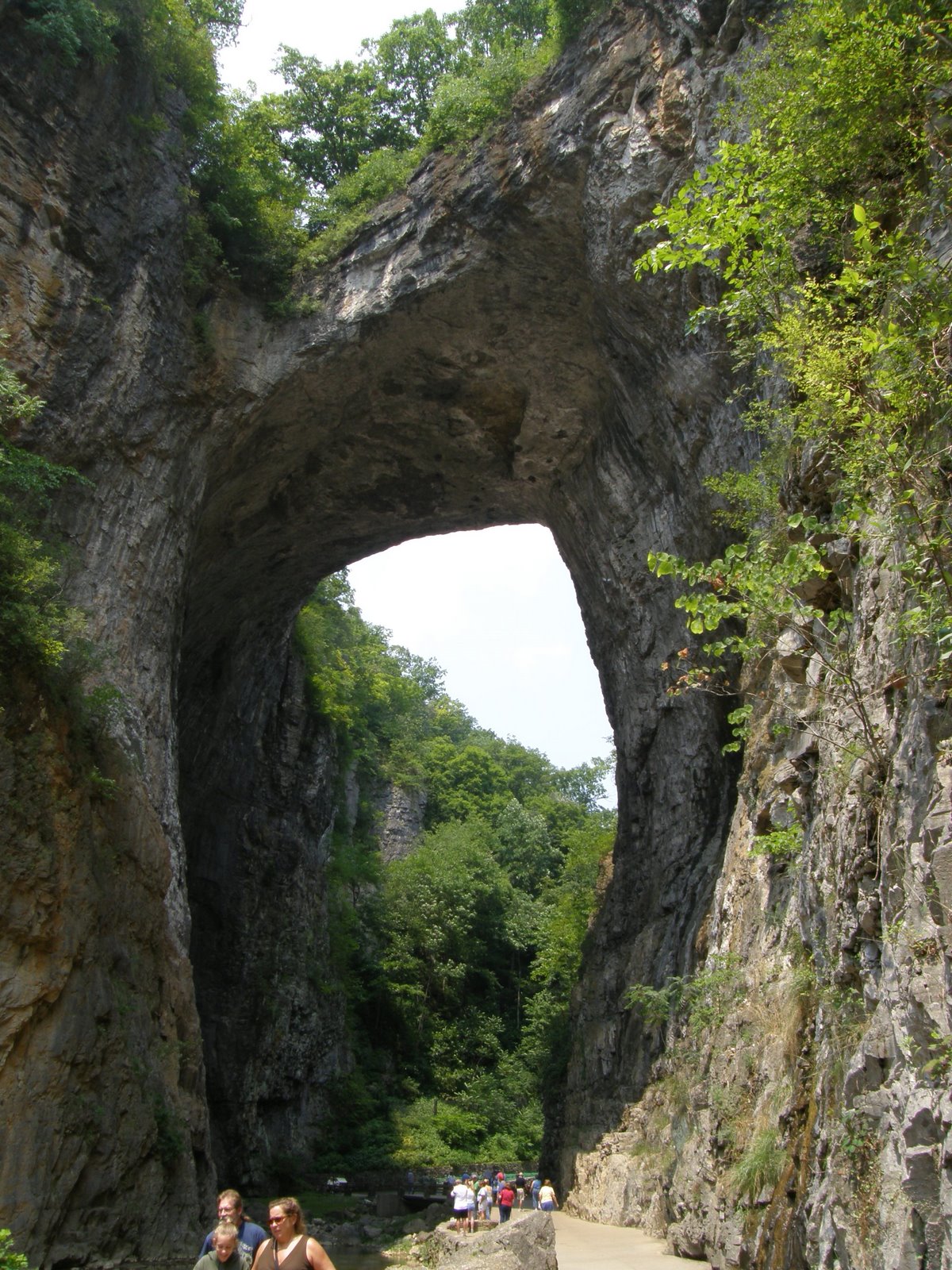 A final look at Natural Bridge
A final look at Natural Bridge
With my curiosity about Natural Bridge satisfied, I turned my car toward Staunton, VA. Staunton is where my mother was born and raised. Driving into the area, my mind flooded with memories of the summers my sisters and I spent at our grandparents’ farm just outside Staunton (Mint Springs). Horse shoes hanging upside down on fence posts, a summer’s bountiful garden, country ham and biscuits, rain on the tin roof, baby pigs, baby lambs, stealing eggs from the chicken coop, the spring house, peaking in the window of the old slave house, playing with our cousins, the dairy barn, exploring acres of fields and enjoying being city kids discovering the country. These and many more treasured memories from a working farm and old house that have been part of the Virginia landscape since before the Civil War.
With so many things to do on the farm and very busy grandparents, we went into town only a few times over the years. I never really knew much about Staunton but have recently heard that the town has preserved it’s heritage and is a growing tourist destination. I was pleasantly surprised at just how well the buildings in Staunton have been preserved.
A little history on a very interesting town. Staunton was laid out and name for Lady Rebecca Staunton Gooch (wife of VA’s Governor Gooch) in 1747. Staunton is the home to Western State Hospital (Lunatic Asylum) founded in 1825(some of the old buildings still stand), VA Institute for the Deaf and Blind (est 1839), Augusta Female Seminary (est. 1842)-now Mary Baldwin College, home of President Woodrow Wilson (born 1856) and more recently, the Shenandoah Shakespeare’s Blackfriars Playhouse, built as a replica of the Globe Theater and internationally known. In 1971, after 32 historic buildings were demolished for “progress” The Historic Staunton Foundation was formed to promoted preservation over demolition. Not only was this group ahead of its time but they have been very successful in their efforts.
Below are a few pictures. Additional pictures will be posted on Smugmug shortly.
Trinity Episcopal Church
The first Augusta Parish Church was built on this site in 1763. This structure dates back to 1855 and has 12 Tiffany Studio windows. The entire yard is a cemetery and most monuments date back to the 1700-1800’s. The monuments are decorative and unique, unlike today’s trend of sameness.
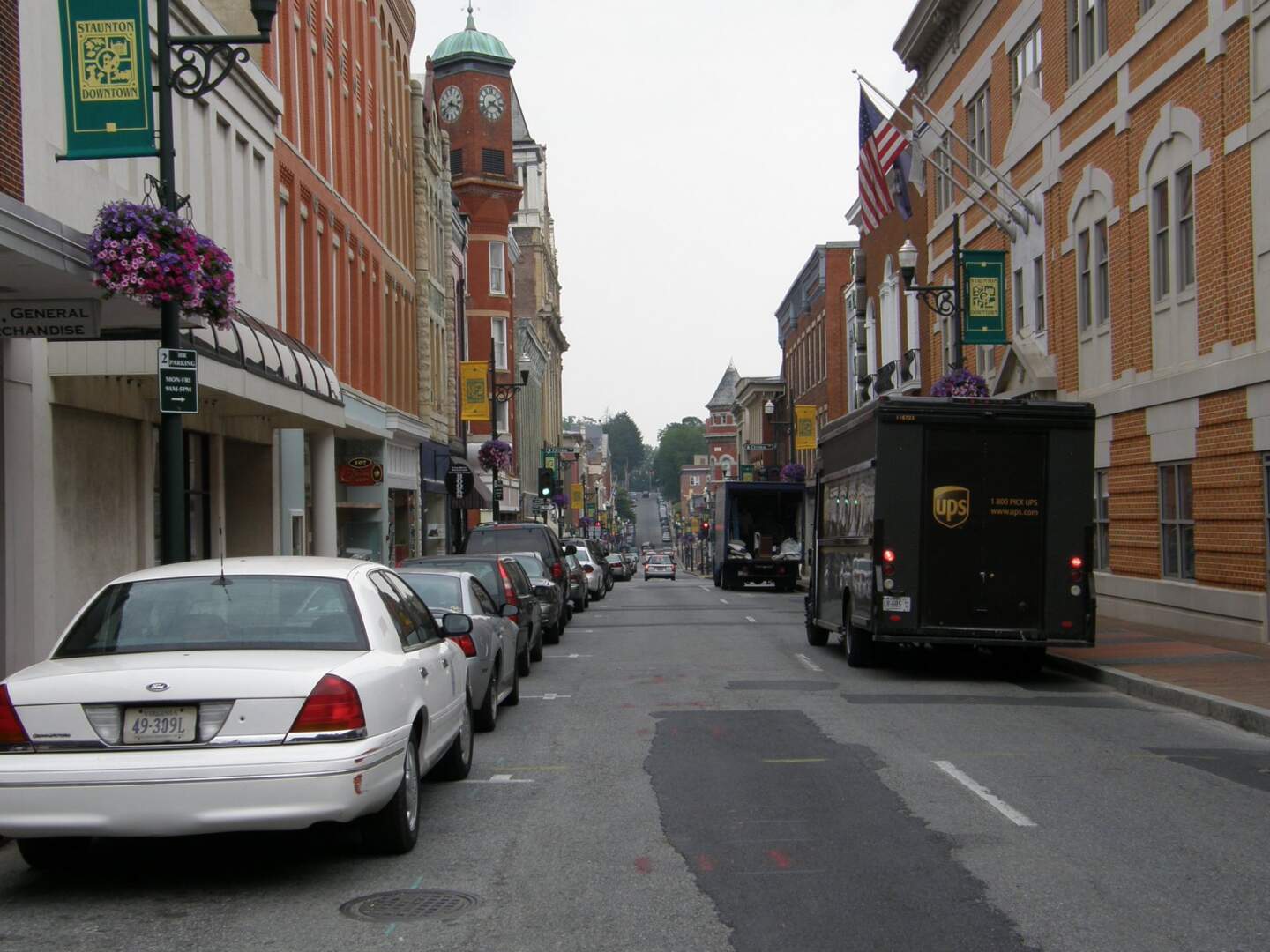 This is my street…Beverley Street
This is my street…Beverley Street
The land Staunton was built on originally belonged to William Beverley. Most buildings in this area date back to 1870-1920 and are considered one of VA’s finest collection of Victorian era architecture. The entire area was listed on the National Register of Historic Places as the Beverley Historic District (1981). Note the clock tower on the left, it marks the center of town.
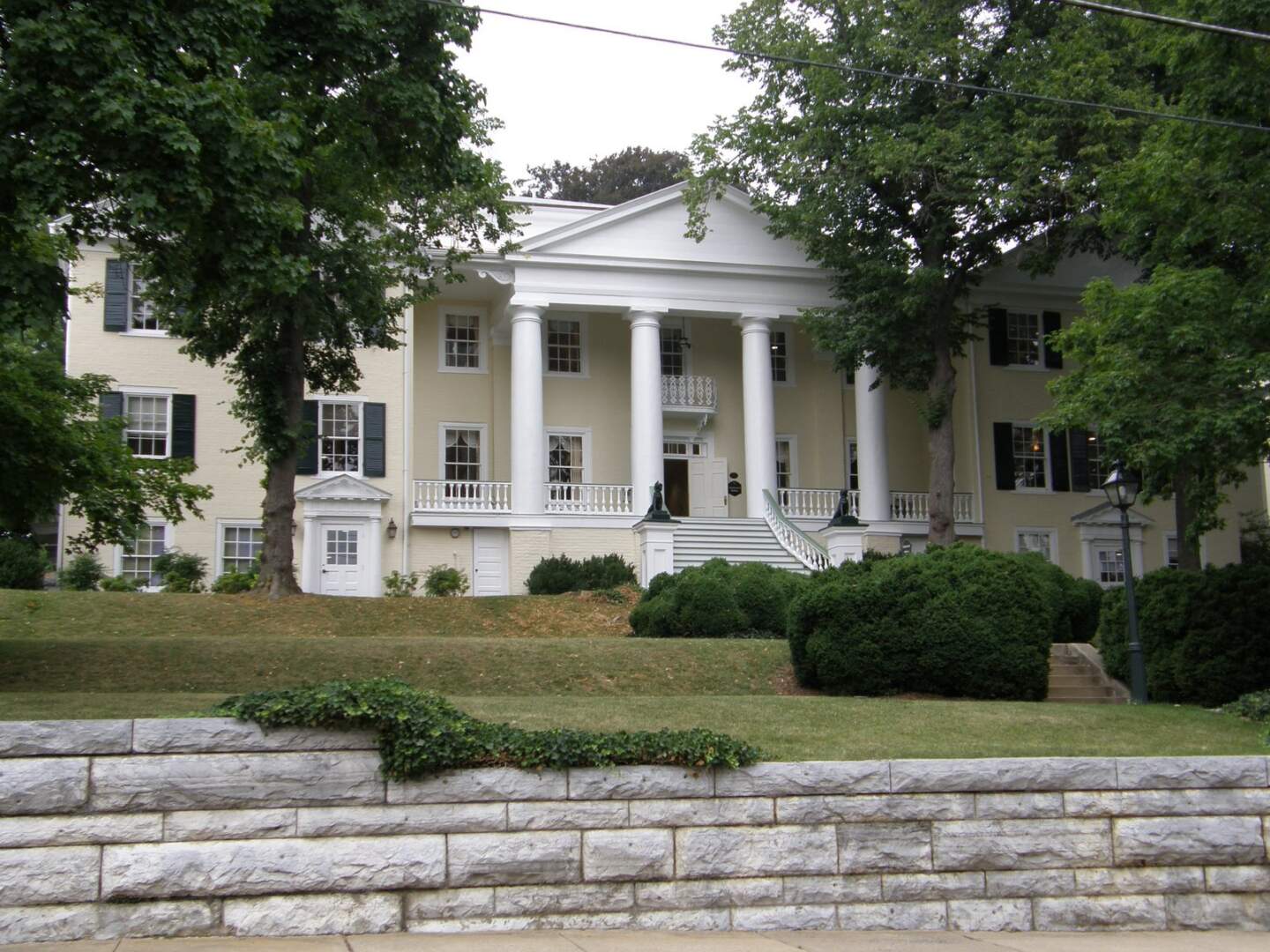 Admissions office for Mary Baldwin College. All of the building attached to the college are yellow with white trim and black shutters.
Admissions office for Mary Baldwin College. All of the building attached to the college are yellow with white trim and black shutters.
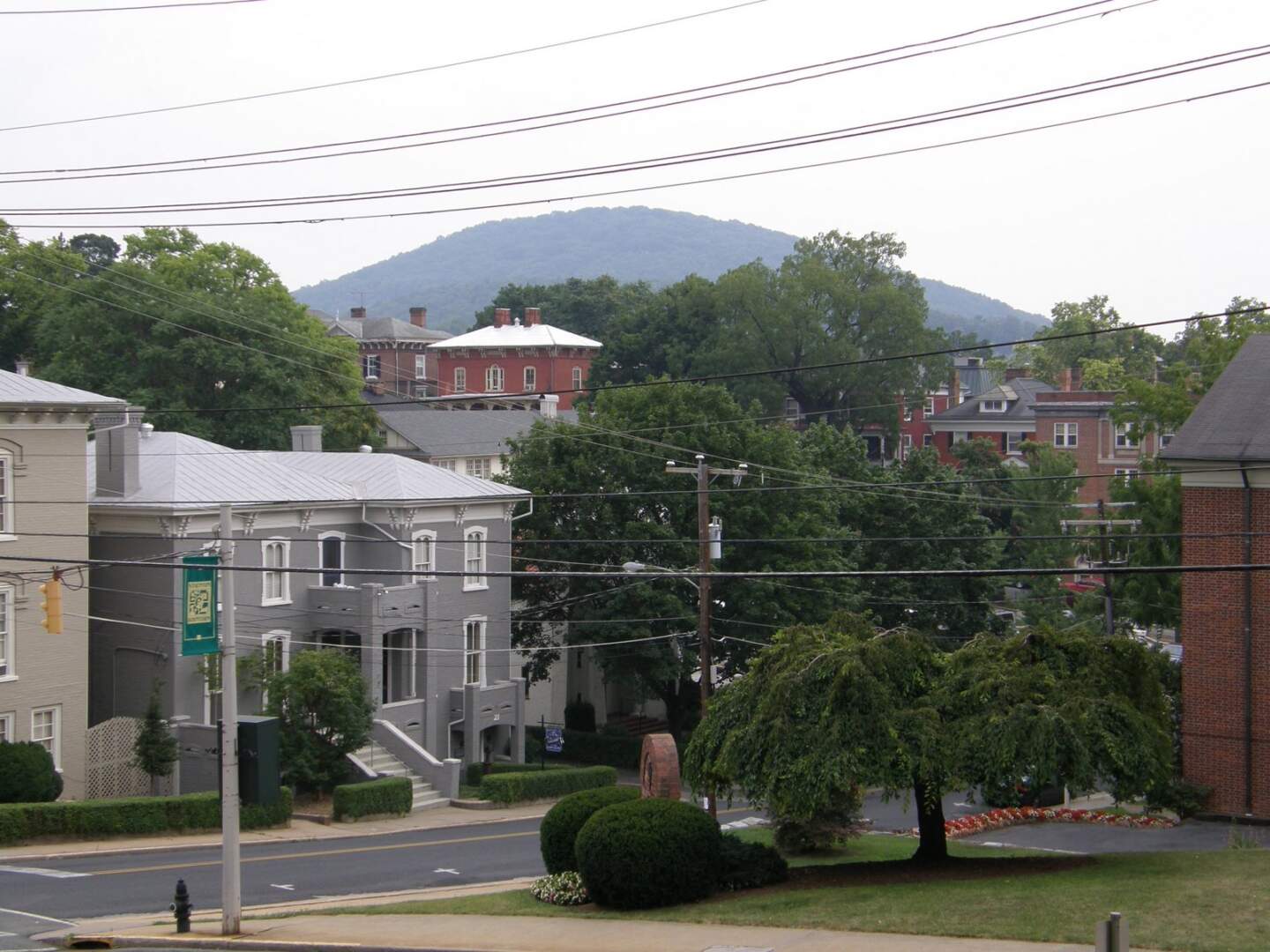 Staunton is built on a series of hills. This is the roof line from the lawn of Mary Baldwin College
Staunton is built on a series of hills. This is the roof line from the lawn of Mary Baldwin College
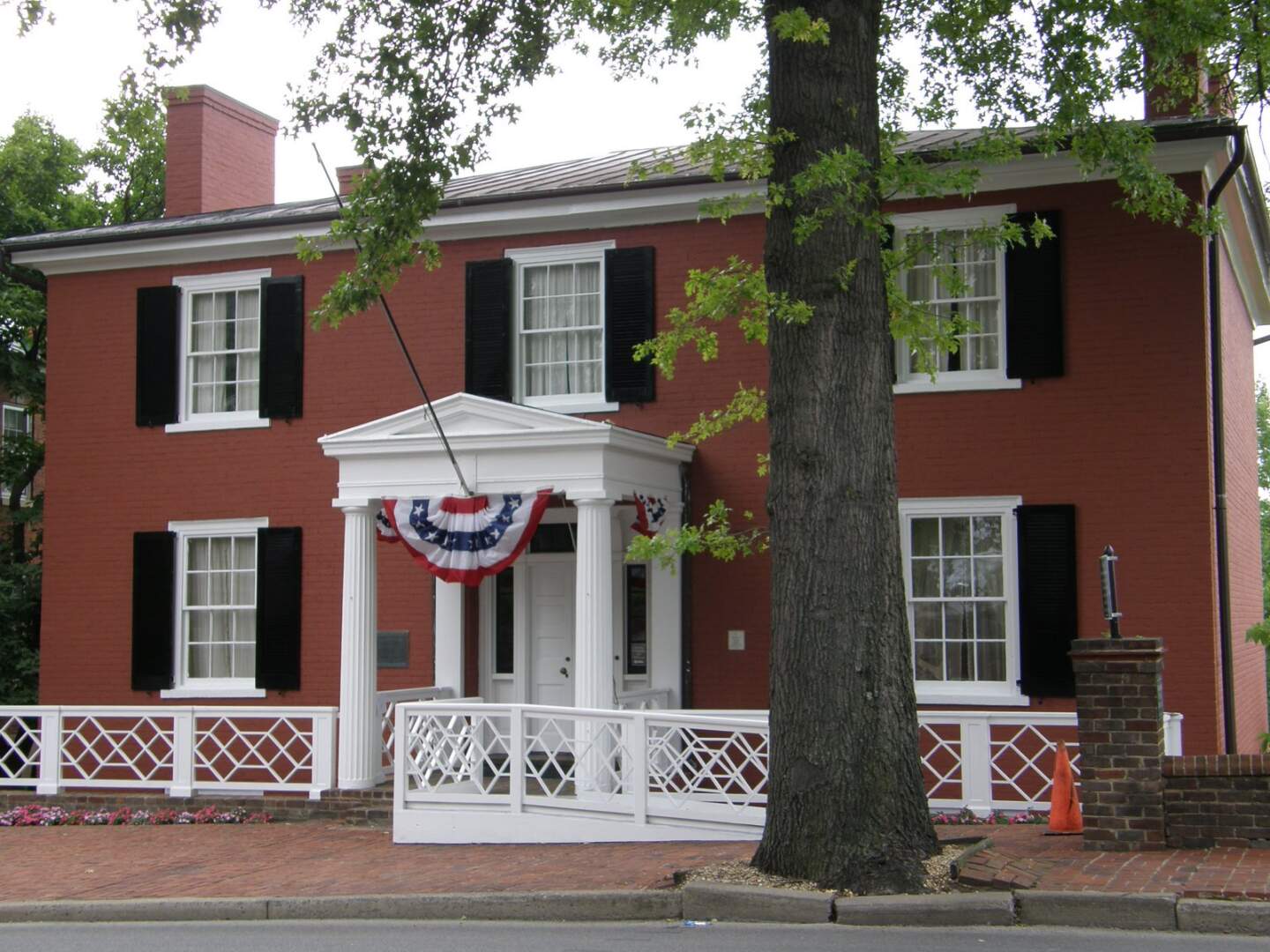
Woodrow Wilson Birthplace. This house was built in 1846 by the First Presbyterian Church as the minister’s home. Woodrow Wilson was born here in 1856.
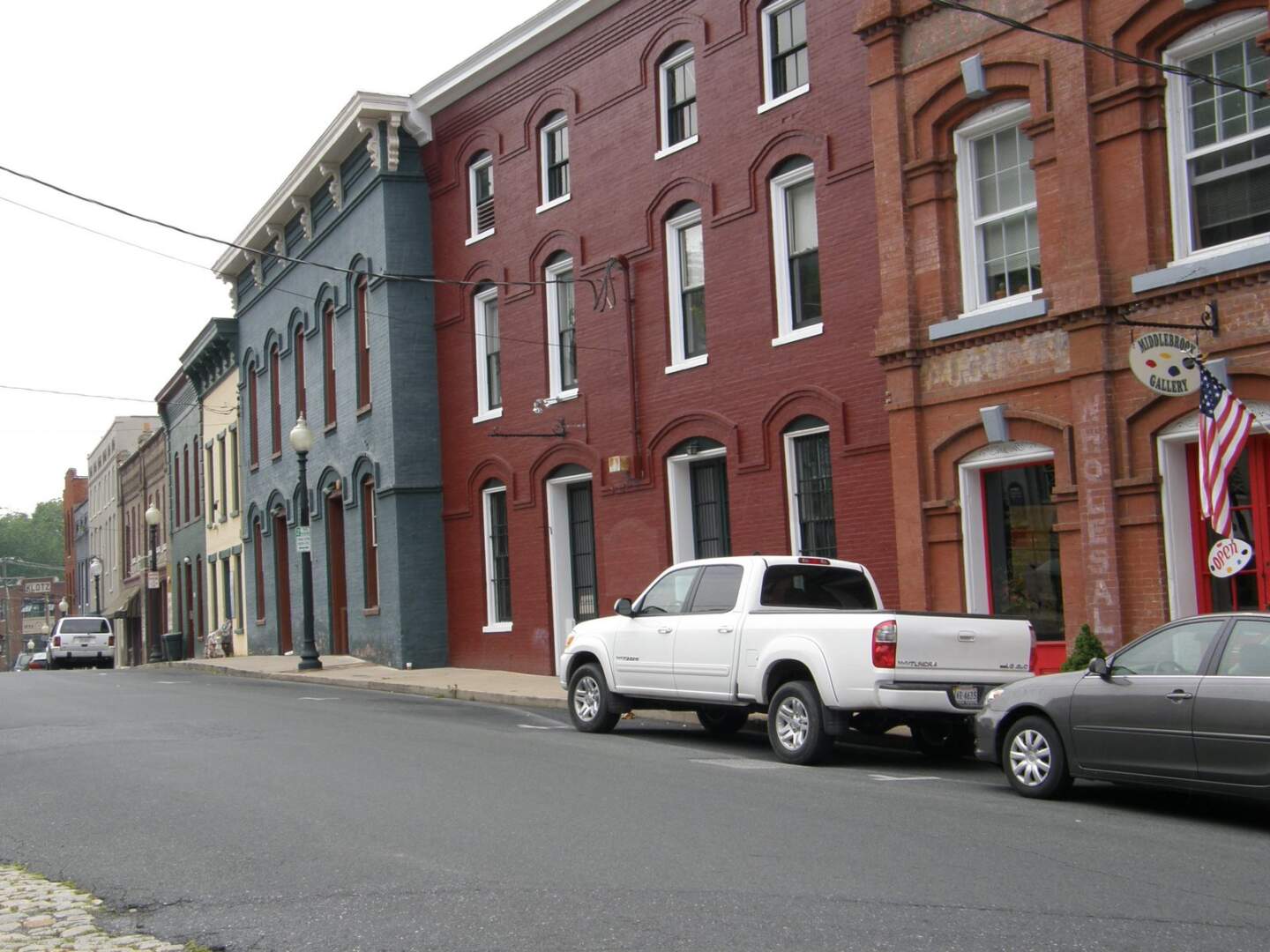
This group of warehouses is part of The Wharf District
The warehouses were built at the turn of the century across the road from the train depot. This use to be the main area of commerce supplying everything from produce to carts and harnesses to the town. My mother’s family along with other area farm families use to bring cakes, pies, vegetables and eggs to the market to sell to the ‘city folk’. This area is also on the National Register of Historic Places.
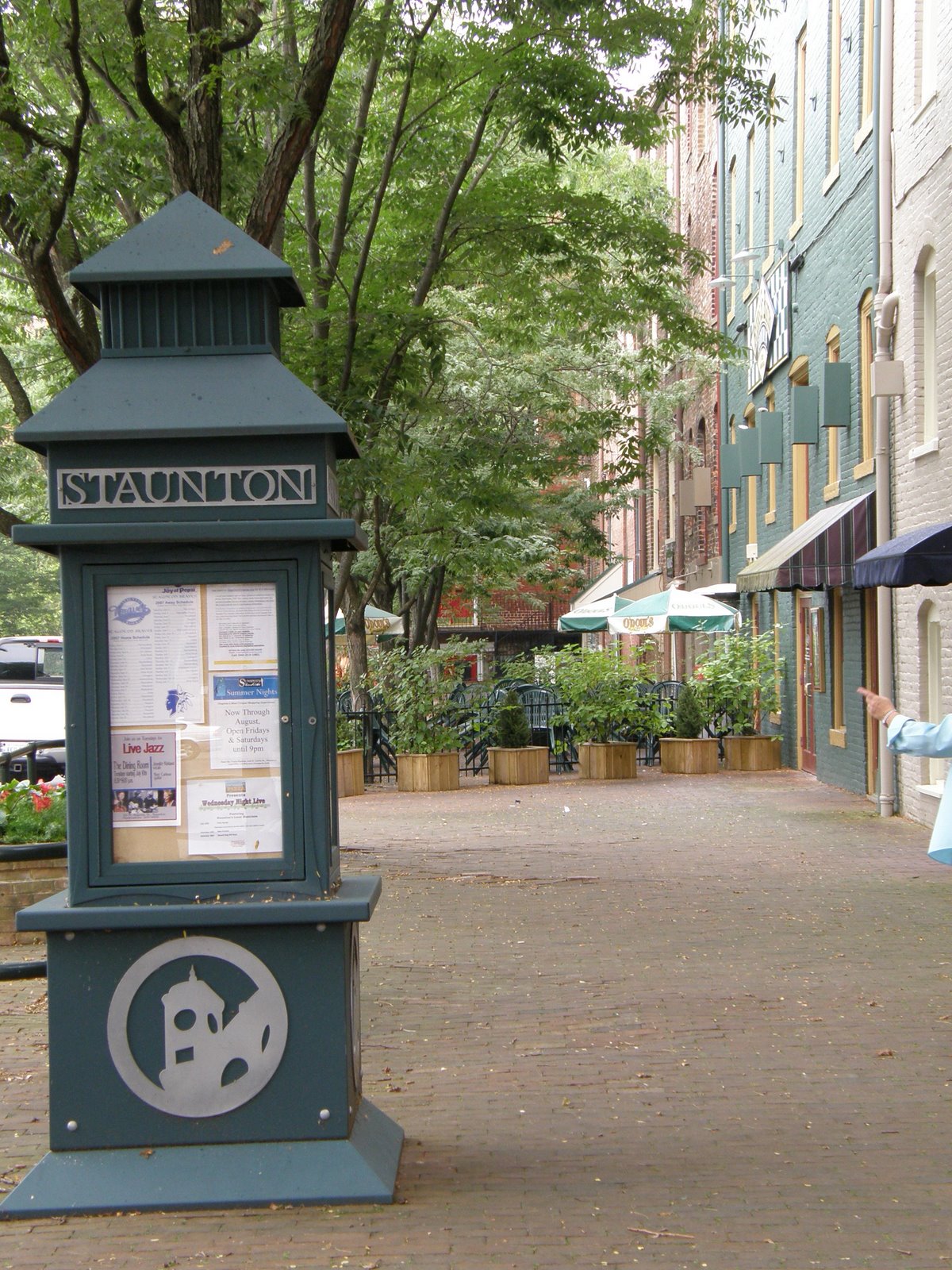 The backside of The Wharf District, now restaurants and offices.
The backside of The Wharf District, now restaurants and offices.
